Permanent Fruit Tree Labels: Your Essential Guide
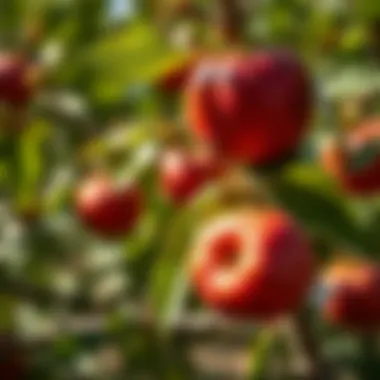
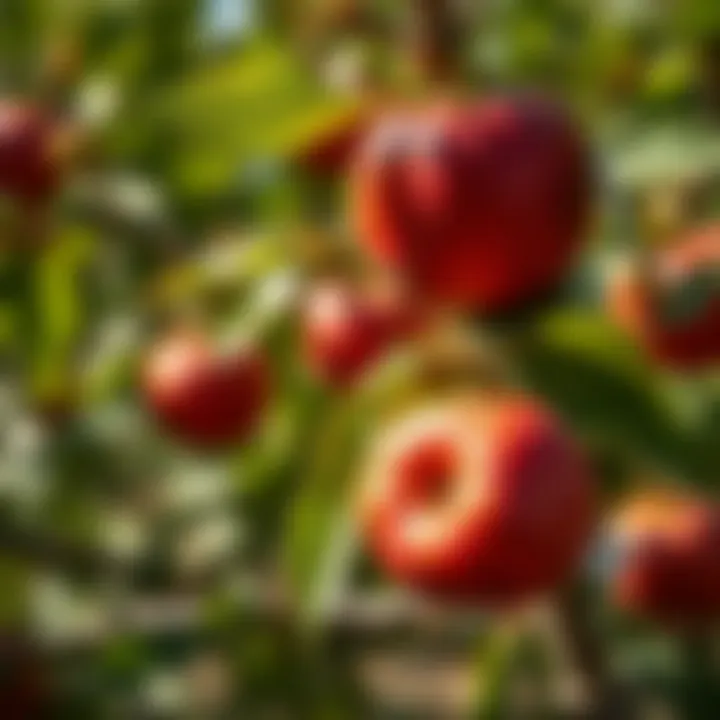
Intro
When it comes to cultivating fruit trees, labels go beyond mere identification; they provide essential information for better plant management. Permanent fruit tree labels play a crucial role in horticulture, allowing both novice and seasoned growers to track species, planting dates, and care instructions. Understanding the importance and applications of these labels can significantly enhance cultivation outcomes while promoting eco-friendly practices. This guide aims to unpack various facets of permanent fruit tree labeling, ensuring you have the necessary knowledge to implement effective labeling strategies in your own garden or orchard.
The Importance of Fruit Tree Labels
Fruit tree labels serve as a vital tool in horticulture, playing a critical role in ensuring that both novice and experienced gardeners manage their plants effectively. These labels provide not just a name, but a wealth of information about the trees they adorn. Understanding this importance is the first step in grasping the full benefits they bring to cultivation.
Understanding the Role of Labels
Labels go beyond just identification; they act as a communication tool between the gardener and their plants. When a label is firmly attached to a tree, it tells a story. It indicates species and variety, guides on care specifics, and helps in recognizing the growth patterns over time. Without these labels, it can become quite convoluted to track growth stages or compare varieties for research and personal satisfaction.
Additionally, labels provide a structured way of documenting your gardening journey. They allow for a standardized approach to learning, improving plant management by ensuring that each tree is appropriately monitored for its unique needs. Strategic labeling becomes an ally in a gardener's quest for a flourishing garden.
Benefits of Permanent Labels
Enhanced Identification
One of the main aspects of enhanced identification is the clarity it brings. Permanent labels are typically made from durable materials that withstand harsh weather, thus retaining their visibility over time. This characteristic makes them a preferred option for serious horticulturists. If you happen to plant multiple varieties of fruit trees, permanent labels help you avoid any mix-ups as the seasons change.
Moreover, these labels can showcase not just the species but also those unique traits that set one variety apart from another. This feature is particularly advantageous for educational purposes and community gardens, where several individuals are involved in maintenance, ensuring everyone is on the same page.
Improved Record Keeping
With improved record keeping, the real magic happens. Permanent labels can serve as a foundation for tracking not only the identity of each tree but also crucial metrics like planting dates and growth rates. This allows for effective monitoring over several seasons. It becomes easier to spot changes or issues, making it simpler to tweak care routines or address diseases as they arise.
A unique feature of effective record keeping through labels is that they can be combined with notes or sketch logs. For example, a gardener might record the amount of fruit produced in a given year directly on the label. It transforms simple identification into a comprehensive growth history, an invaluable resource for any gardener.
Facilitation of Research and Development
In terms of research and development, permanent labeling is instrumental. As agricultural practices evolve, data collection becomes key. Labels allow researchers and horticulturists to gather vital information about various species' performances under different conditions. By clearly tagging trees with their respective traits and care methods, a clearer picture emerges of what practices yield the best results.
In educational settings, these labels can even play a role in introducing students to complex botanical concepts in a tangible way. The ability to connect theory with direct observation is heads and shoulders above textbook learning alone. The accessibility of data is enhanced by ensuring that labels are informative and consistently applied across different trees, enabling students of all ages to engage in meaningful horticultural practices.
Permanent fruit tree labels are not just markers; they are narratives waiting to be written, histories waiting to be recorded.
Through enhanced identification, improved record keeping, and the facilitation of research, permanent fruit tree labels provide multifaceted benefits that cater to the needs of diverse horticulturists. In an age where customization and detail matter more than ever, committing to well-designed labels amplifies the overall quality of tree management and paves the way for successful cultivation.
Materials for Permanent Fruit Tree Labels
When it comes to labeling fruit trees effectively, the choice of materials cannot be understated. The selected materials play a vital role in ensuring that the labels withstand the test of time and the elements. They contribute to proper identification and maintenance of fruit trees, which is crucial for both casual gardeners and professional horticulturists. Different characteristics and benefits arise from various materials, and understanding these can greatly influence labeling success.
Common Materials Used
Metal Labels
Metal labels are known for their strength and durability. Often crafted from materials like aluminum or stainless steel, these labels can endure harsh weather conditions better than most. Their robust nature makes them a go-to option when permanence is essential. The key characteristic of metal labels is their ability to resist fading from sun exposure and damage from water, making them an excellent choice for outdoor use.
Unique features of metal labels include their resistance to rust and corrosion, especially when it comes to stainless steel. However, one slight drawback is that they can sometimes be heavier than other types of labels, which might affect their installation. Overall, metal labels offer the reliability needed for long-term identification of fruit trees, proving particularly beneficial in settings where visual cues are crucial for tree care and management.
Plastic Labels
Plastic labels bring a different set of advantages to the table. Lightweight and often cheaper than metal options, they are a popular choice among many gardeners. The most prominent feature of plastic labels is their ease of handling and flexibility; they can be easily attached to branches or inserted into the soil without much hassle.
Though plastic labels are resistant to moisture, prolonged exposure to intense sunlight might lead to fading over time. However, advancements in UV-resistant coatings have improved their longevity. While they may not be as durable as metal labels, the initial cost efficiency and the variety of colors and designs available make plastic labels a solid option, especially for casual users who may wish to change labels as their trees grow or as new varieties are introduced.
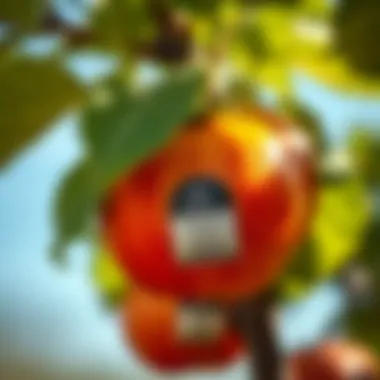
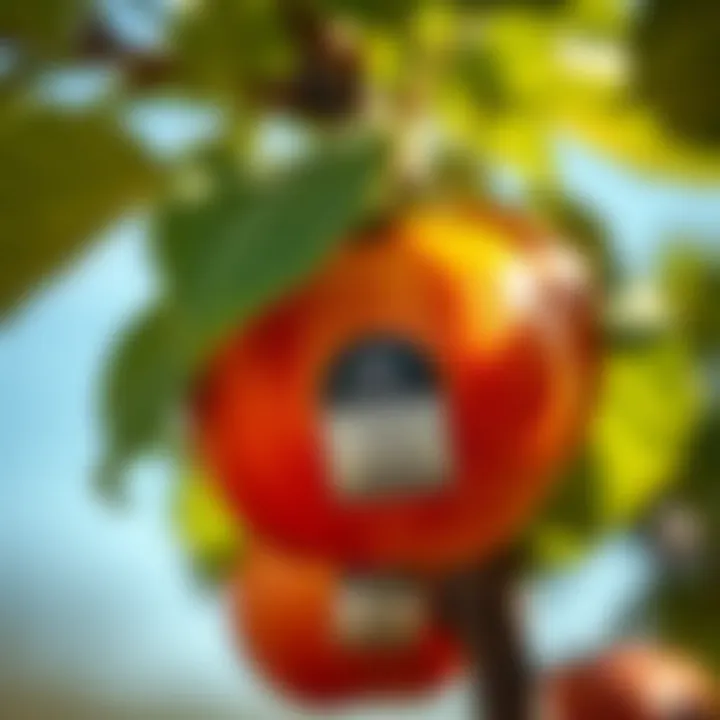
Wooden Labels
Wooden labels are a more natural option and can blend seamlessly into a garden setting. Often made from cedar or other durable types of wood, these labels impart a rustic charm, appealing to those looking for an eco-friendly choice. The key aspect of wooden labels is their ability to be easily personalized. One can carve or write directly on them, offering a creative avenue for enthusiasts.
Despite their aesthetic appeal, wooden labels do have drawbacks. They may require some maintenance over time, as they can succumb to rot or insect damage if not treated properly. However, when using treated wood, the lifespan of these labels can be significantly extended. In cases where gardeners prefer a green approach, wooden labels offer an appealing alternative that fosters a connection with nature.
Durability and Longevity
Weather Resistance
Weather resistance is fundamental to the effectiveness of any plant label. When labels withstand harsh conditions like rain, sun, and snow, they stay legible longer. One significant characteristic of weather-resistant labels is their ability to resist degradation from moisture and temperature fluctuations. For example, vinyl and some plastics are engineered to withstand moisture without warping or fading. This property is crucial because when labels need replacing frequently, it undermines the whole purpose of having them. Therefore, having weather-resistant materials can save time and effort for producers and hobbyists alike.
Corrosion Resistance
Corrosion resistance relates closely to the materials used in fruit tree labels, particularly metals. Stainless steel is particularly revered for its ability to resist rust caused by exposure to rain and humid climates. This attribute is essential because labeling must remain intact and clear for identification purposes. The notion of environmental exposure creating corrosion is a concern that people often overlook. If a label’s surface becomes corroded, vital information could be lost, leading to significant confusion in identifying and managing the trees. Moreover, investing in corrosion-resistant materials is a wise decision, as it ensures the longevity and reliability of labeling efforts.
Choosing the right material for your labels not only aids in identification but ensures they'll endure the elements, thereby reducing costs and time spent on replacements.
Designing Effective Labels
Creating effective labels for fruit trees is not just a matter of putting names on a piece of material. It's about enhancing the overall management and cultivation process, which is crucial for both novice gardeners and seasoned horticulturists. A well-designed label contributes significantly to accurate plant identification, improving record-keeping, and facilitating research and development. When labels are designed thoughtfully, they serve as a bridge between growers and their plants, leading to better care and cultivation outcomes.
Essential Information to Include
Species Identification
Species identification is the first step in any plant management narrative. It ensures that each fruit tree in the garden or orchard is readily recognized by its specific name. The key characteristic of species identification lies in its ability to foster a clear understanding of what one is growing. This clarity is vital, especially for those managing a diverse collection of plants.
Including the scientific name alongside the common name is often a beneficial strategy as it allows for universal recognition across language barriers and varying cultural contexts. A unique feature of this approach is the reduction in confusion about which tree is which, particularly with generically named varieties. Therefore, identifying species accurately can significantly reduce costly mistakes when it comes to cultivation practices or pest management strategies.
Varietal Information
Varietal information expands on the species identification to provide deeper insight into the specific characteristics of a tree. Varietal information's key characteristic is that it encapsulates the unique traits of a specific type of fruit tree, be it its flavor profile, growth habit, or disease resistance. This level of detail makes it a popular choice for those keen on optimizing their orchards or gardens for safety and productivity.
By adding varietal information to the label, the gardener can better assess which fruits to expect, what care routines suit each tree best, and how to prepare for potential challenges. A unique feature is its correlation with better yield predictions; knowing whether a variety is early-season or late-season can influence harvesting activities and marketing a crop. Thus, including varietal information is invaluable for maximizing both the aesthetic and economic value of a fruit-growing operation.
Planting Date
Planting date marks a pivotal moment in the life cycle of fruit trees. It is crucial for understanding growth patterns and overall health. This reference point serves as an anchor for monitoring the tree's development and gives context to the information on the label. The key characteristic of planting date is its role in tracking the age of a tree, which in turn influences care practices and expectations around yields.
Often included on labels, this detail can help in planning care activities, such as irrigation and fertilization schedules aligned to the tree's growth stages. The unique aspect of noting the planting date is that it empowers the grower to make informed decisions about when to prune or harvest – insights that otherwise might be missed. Thus, capturing the planting date can enhance freshness and quality in the fruits grown, ultimately benefiting the grower’s efforts.
Fonts and Readability
When designing labels, the choice of font and its readability shouldn’t take a back seat. The selected font plays a significant role in ensuring that information is legible from a distance, which is crucial when navigating among numerous trees in a garden. A strong contrast between text and background color can bolster visibility even under harsh sunlight.
Moreover, sticking to clear, simple fonts avoids confusion and misinterpretation of the tree's details. Using a combination of upper and lower case letters can enhance readability compared to all caps, which can sometimes create an impact that is harder to decipher quickly. Remember, the aim is to ensure that information can be processed swiftly, especially by those who may not be closely familiar with the specific trees.
By paying attention to fonts and ensuring the information is presented in an accessible manner, you can significantly enhance the overall functionality of your labeling systems, ensuring easy access to important data at a glance.
Implementing Installation Techniques
When it comes to keeping your fruit trees thriving and organized, the installation techniques you choose for your labels can make all the difference. Proper installation not only ensures that the labels remain visible and legible over time, but it also lessens the chances of them being lost or damaged. A well-placed label serves as a guide for proper care, enabling better management practices and ultimately leading to more fruitful outcomes. Think of it like this: just as a roadmap aids in navigation, your labels help steer the tree caretaker towards successful cultivation.
Placement Strategies for Optimal Visibility
Choosing the right placement for your labels is critical. They shouldn’t just be functional; they should be easy to spot at a glance. Here’s where a few strategies come into play:
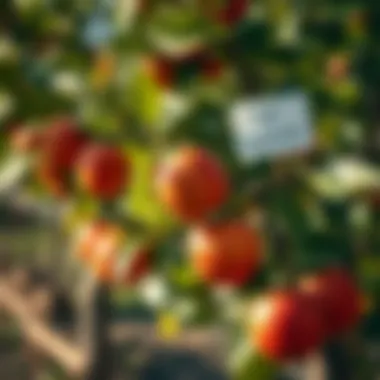
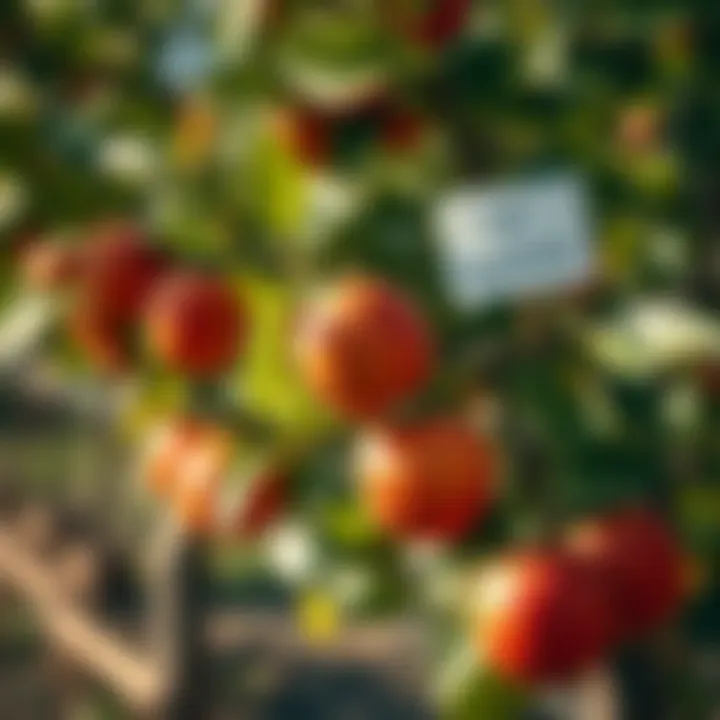
- Height Matters: Labels positioned at eye level are user-friendly. If you place them too low, they may be obscured by grass, while too high might make them hard to read.
- Avoiding Overhead Obstacles: Trees grow, and branches can obscure labels. It’s wise to ensure that no part of the tree will block visibility as it matures.
- Grouping for Convenience: If you have multiple trees close together, group the labels in a manner that lets you read them without having to wander too far.
Taking these placement strategies into account means you’ll save time and reduce frustration during tree management tasks.
Tools and Techniques for Installation
Having the right tools and methods can spell success in getting those labels secured. This isn’t just about slapping labels on trees; it involves a choice of how to affix them securely. The two common methods are drilling and hammering, alongside adhesive and fasteners. Let’s look at each.
Drilling vs. Hammering
Drilling into a tree may sound more daunting than hammering, but it has benefits that could make it the preferred choice.
- Invasion Awareness: Drilling is less likely to cause bark splitting and, importantly, reduces the risk of introducing pathogens into the tree. The damage from hammering, however, can lead to wounds that might not heal well.
- Stability: A label that’s drilled in can generally withstand the elements better and remains less likely to get knocked loose in storms or strong winds.
The unique feature of drilling is that it effectively creates a fixed point of attachment, ensuring that your information stays put for the long haul. While it requires more effort and may necessitate special tools, the longevity gained often far outweighs those initial hurdles.
Adhesives vs. Fasteners
When you consider attaching your labels, both adhesives and fasteners present valid options, but they each come with their own set of advantages.
- Adhesives: Using strong adhesives offers a clean look, as they can be attached directly without additional hardware. They’re often faster to implement, as you can simply peel and stick. However, their longevity can be an issue, especially in wet conditions. Labels might end up peeling away over time.
- Fasteners: Alternatively, fasteners—whether screws, nails, or ties—provide a more reliable long-term option. But here’s the caveat: installation takes longer and requires more tools. Moreover, if the fasteners are not rust-proof, they may corrode and demand replacement.
Ultimately, when deciding between adhesives and fasteners, consider the environment in which your trees thrive and the level of commitment you’re willing to invest in label maintenance.
Overall, weighing the different aspects of installation techniques sets the foundation for successful labeling. They serve as the right frame for all the information that follows, bolstering your ability to care for your trees effectively.
Maintenance and Upkeep of Labels
Maintaining and regularly caring for fruit tree labels is as crucial as the initial installation process. A label that is in good condition serves not only as a signpost for identification but also as a valuable reservoir of information concerning the tree's history, species, and care requirements. If these labels wear down due to environmental factors or neglect, the essential information they bear can be lost, leading to confusion and possible mismanagement of the trees involved. This section emphasizes the significance of consistent maintenance practices, providing insights that will help tree caretakers ensure that their labels remain intact and informative over the years.
Regular Inspection Protocols
Regularly checking fruit tree labels ensures that they remain functional. Establishing a routine inspection protocol helps identify issues early, like fading text or physical damage from weather elements. Ideally, inspections should happen at the start of each growing season to assess each label’s condition and take any necessary actions. The frequency of these inspections is essential; quarterly checks could be a good standard. Look for signs such as fading, peeling, or rusting. If a label is showing signs of wear, make a note to replace it, but also consider recording the original information in a separate log for reference. This way, even if something happens to the label, the information is still preserved.
Cleaning Guidelines
Keeping the labels clean not only helps in maintaining their visibility but also prolongs their lifespan. Dust, dirt, and stubborn organic matter can accumulate over time, making legends hard to read. Hence it is crucial to adopt appropriate cleaning procedures.
Safe Cleaning Solutions
When it comes to cleaning labels, opt for gentle, biodegradable solutions. Using harsh chemicals can corrode certain materials, particularly metals or plastics, leading to degradation. A popular choice could be a simple mix of warm water and a mild soap, designed to protect the integrity of the material. Natural ingredients, such as vinegar or baking soda, can also be beneficial. They’re less likely to damage materials and are safer for the environment. The primary characteristic of these solutions is their ability to effectively lift grime without risking damage, which makes them a favored option among horticulturists.
Preventing Wear and Tear
Preventing wear and tear is fundamentally about proactive care. Ensuring that labels are securely fastened, using rust-proof fasteners, and considering protective coatings can greatly extend their lifespan. The key aspect of wear and tear management is consistent vigilance. For instance, labels subjected to strong winds or heavy rainfall might require extra care, such as reinforcing their placements or choosing heavier materials. An additional point to consider is protecting the labels from direct exposure to intense sunlight, which can fade texts and graphics over time. By taking these proactive measures, caretakers can significantly reduce the need for frequent replacements, thus saving time and resources in the long run.
Innovations in Labeling Practices
In the fast-paced world of horticulture, adopting modern methods for labeling fruit trees has become increasingly vital. Innovations in labeling practices not only enhance the way we manage our orchards but also facilitate better communication about plant information. This section will delve into cutting-edge technologies that have emerged, focusing on their substantial benefits and practical considerations in different environments.
Smart Labeling Technologies
QR Codes and Barcodes
QR codes and barcodes are valuable tools that contribute significantly to effective horticultural labeling. These symbols can store a great deal of information, from species data to care instructions. The ease of accessibility is a key characteristic of using these codes as they can be scanned using a smartphone, allowing quick retrieval of detailed information.
One unique feature of using QR codes is their capacity to link to databases, websites, or even instructional videos. This connectivity can serve as a handy reference, particularly for novice gardeners who might need a little extra guidance. However, it’s worth noting that reliance on digital devices brings its own challenges, such as potential technical issues or accessibility concerns for those less tech-savvy. Still, the overall trend shows growing popularity in utilizing QR codes due to their flexibility and capability in streamlining plant management.
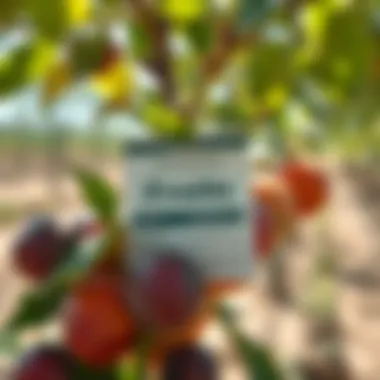
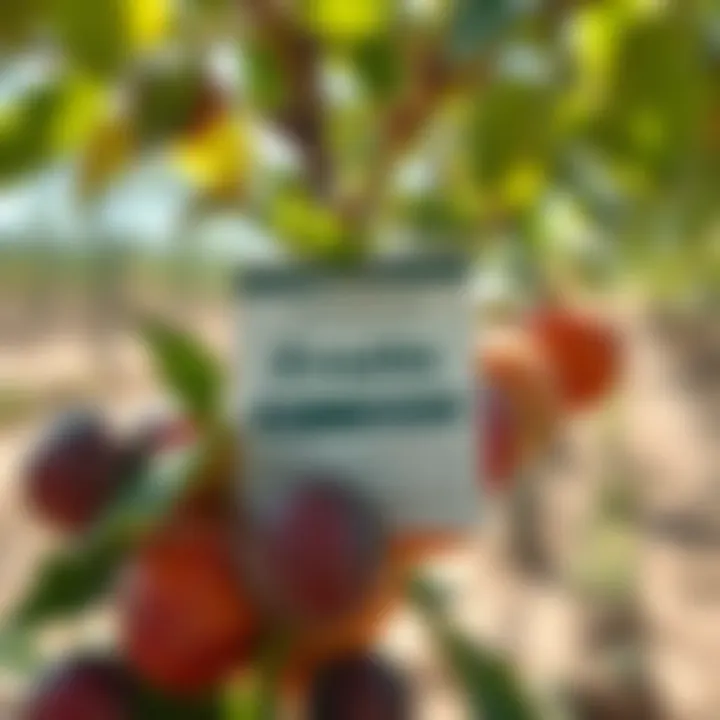
Digital Record-Keeping
Digital record-keeping stands out as a revolutionary aspect of modern horticulture. It entails the systematic collection of data regarding fruit trees, such as growth patterns, watering schedules, and pest management. This method of record-keeping is particularly favorable because it allows for efficient data management—organizing information becomes a breeze with digital tools.
The uniqueness of digital record-keeping lies in its integrative capacity; data can easily be shared among management teams, fostering better informed decision-making. But just like with any technology, there are downsides; the initial setup may require time and investment, and there’s always the risk of data loss if not properly backed up. Overall, the benefits of improved organization and accessibility distinctly tilt the balance in favor of digital solutions.
Sustainable Labeling Solutions
As the world becomes increasingly conscious of environmental impact, sustainable labeling solutions have gained traction in horticulture. This approach not only ensures effective plant management but also aligns with broader ecological goals.
Biodegradable Materials
The transition towards biodegradable materials marks a significant stride in responsible labeling practices. These materials decompose naturally over time, reducing landfill waste and minimizing environmental footprint. A notable characteristic of biodegradable options is their low long-term impact on the environment, making them an attractive choice for environmentally conscious growers.
The real magic of biodegradable labels is that they serve their purpose without lasting harm to nature. However, some may argue that their durability can be a concern in harsher weather conditions. Yet, the burgeoning market for these materials showcases their potential, as more producers strive to create labels that meet both durability and sustainability standards.
Recyclable Options
Recyclable labeling options offer another layer of environmental friendliness. This aspect allows used labels to be processed and made into new products, contributing to a circular economy. The practical utility of recyclable materials makes them an appealing option for fruit tree growers today.
What sets recyclables apart is their capacity to be reused, which can significantly reduce overall waste. There may be challenges like the need for clean and proper sorting to maximize recycling efficiency, but when managed correctly, these materials provide an effective solution for both short and long-term labeling needs. As more farmers become aware of these advantages, recyclable options are likely to become a standard practice in fruit tree horticulture.
The alignment of modern technology with sustainable practices marks a watershed moment in the evolution of horticulture, allowing for more thoughtful plant management that respects both productivity and the planet.
Regulatory Considerations
When it comes to the realm of fruit tree labeling, understanding the regulatory framework is akin to having a sturdy guidepost in an unfamiliar territory. This section sheds light on the critical aspects of regulatory considerations related to permanent fruit tree labels, emphasizing their essential role in ensuring compliance, promoting ecological practices, and enhancing overall orchard management. Regulations not only outline what must be included on labels but also dictate the materials and methods that can be employed, ultimately shaping the horticultural landscape.
Local Regulations for Labeling
Navigating local regulations for labeling can feel like a game of chess; one misstep can lead to complications. Each region can have its own set of rules, and staying informed is paramount. Local agricultural departments may issue directives that determine:
- Content Requirements: Many jurisdictions require that specific information be presented on labels—such as species, variety, and where it was cultivated. This ensures that consumers and professionals alike can identify plants accurately.
- Material Restrictions: Some areas may restrict the types of materials that can be used for labels, especially in organic farming or protected areas where environmental impact is a concern.
- Installation Guidelines: Guidance on how labels should be affixed to trees or surroundings may also be detailed in local laws. Proper installation practices are not just for aesthetics; they often play a role in safety, too.
Keeping abreast of these specifics is vital, as failing to adhere to local regulations could lead to hefty fines or even revocation of permits for growing certain plants.
Best Practices to Ensure Compliance
Adhering to local regulations can take a bit of finesse but employing best practices can smooth the pathway. Here are some strategies to ensure compliance:
- Consult Local Authorities: Before setting out to label your trees, touch base with your local agricultural authority. They can provide current guidelines and any changes in regulations.
- Use Approved Materials: Invest in labeling materials that are compliant with local laws. For instance, using biodegradable options may not just enhance your farm's image but also ensure you follow eco-regulations.
- Maintain Records: Keep accurate records of label installation and maintenance practices. Should regulations be questioned, you have documentation to back up your actions.
- Regular Updates: Revisit local regulations periodically, as they can evolve. Consider subscribing to newsletters or updates from agricultural departments to stay in the loop.
- Educate Your Team: If you have staff members, ensure they are aware of the regulations and the importance of compliance. A well-informed team acts as the first line of defense against any regulatory pitfalls.
Maintaining compliance not only protects your investment but also bolsters the credibility of your fruit orchard in the broader community.
Future Trends in Tree Labeling
The landscape of horticulture is constantly shifting, and tree labeling is no exception. As we veer further into the 21st century, the integration of technology in various agricultural practices becomes ever more prominent. Understanding these trends is not just a matter of keeping up; it’s about enhancing efficiency, bettering outcomes, and fostering a connection between traditional farming methods and modern advancements. The importance of noting these trends in permanent fruit tree labels cannot be overstated, for they encapsulate the trajectory of horticultural practices that may very well define the future of our gardens and orchards.
Technological Advancements
Technology and labeling are becoming intertwined, showcasing how advancements can streamline processes and improve accuracy. One significant trend is the use of digital tools such as QR codes embedded in labels. These codes allow anyone to scan a tree's label and instantly access a wealth of information about that species or variety. This can include data on growth habits, disease susceptibility, and even guidelines for care and maintenance.
Imagine a scenario where a casual visitor can source information on a fruit tree simply by snapping a picture with their smartphone. This fosters engagement and education, elevating the experience of horticulture to new heights.
Moreover, some innovative labels incorporate sensors that gather environmental data, logging soil moisture levels, temperature, and more. Such smart labeling goes beyond simple identification, acting as a real-time monitoring system for growers. Improved data collection can lead to more informed decision-making and ultimately yield better cultivation results.
Potential Impacts on Horticulture
The impacts of these advancements in tree labeling don’t just stop at convenience. They challenge conventional practices and encourage critical thinking in horticulture. The following points capture some potential impacts of adopting modern labeling technologies:
- Enhanced Sustainability: Smart labels can help track water usage and nutrient levels, contributing to more sustainable growing practices. By understanding the precise needs of each tree, farmers can minimize waste and optimize resource allocation.
- Greater Accessibility: Information becomes accessible to a wider audience, from seasoned horticulturists to newcomers in the gardening world. Education on proper care and maintenance becomes democratized, fostering a more informed community.
- Improved Research Validity: Detailed data sets collected from labeled trees can aid researchers in finding patterns and developing solutions in crop management, pest control, and sustainable practices. Knowing which trees perform best in certain conditions informs breeding and research efforts.
In sum, the future of tree labeling reflects a dynamic shift fueled by technology. As these trends unfold, embracing them will not only affirm a commitment to progress but will also ensure that growers remain equipped to meet challenges head-on in the ever-evolving world of horticulture. It’s clear that the integration of innovation can offer tangible benefits, shaping a fruitful pathway forward.



